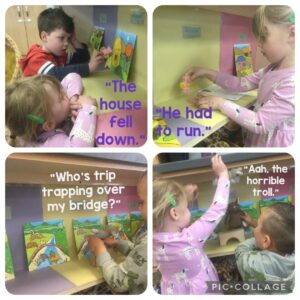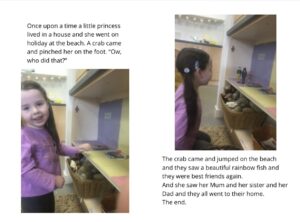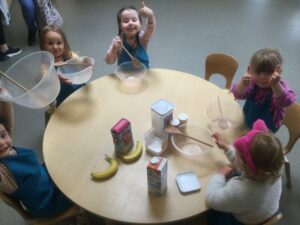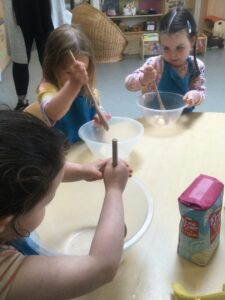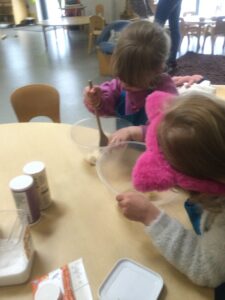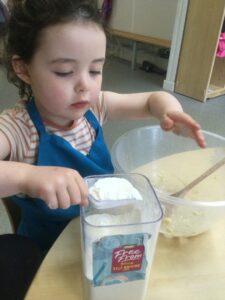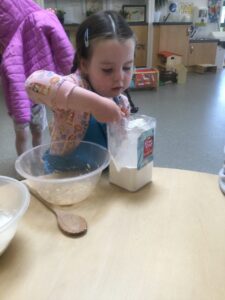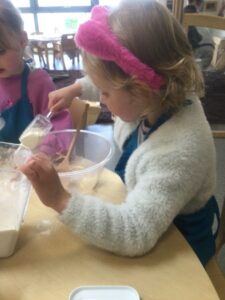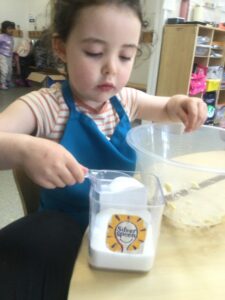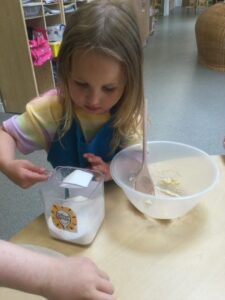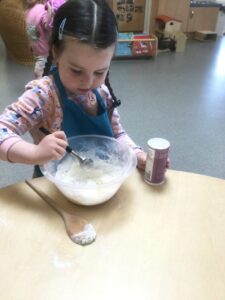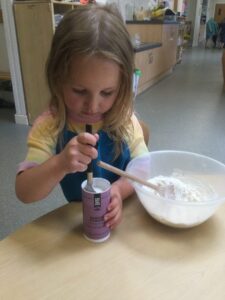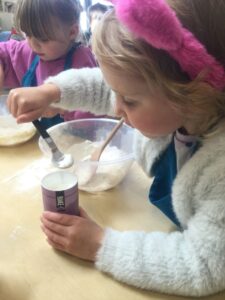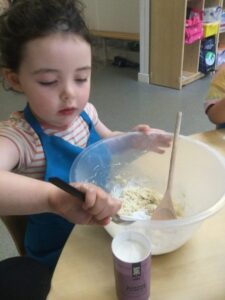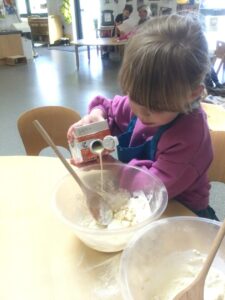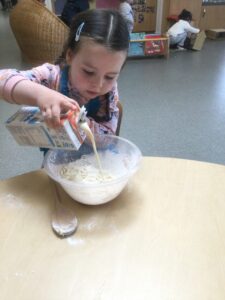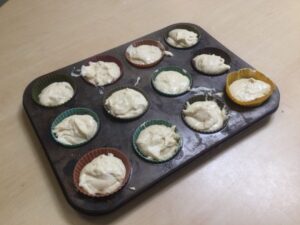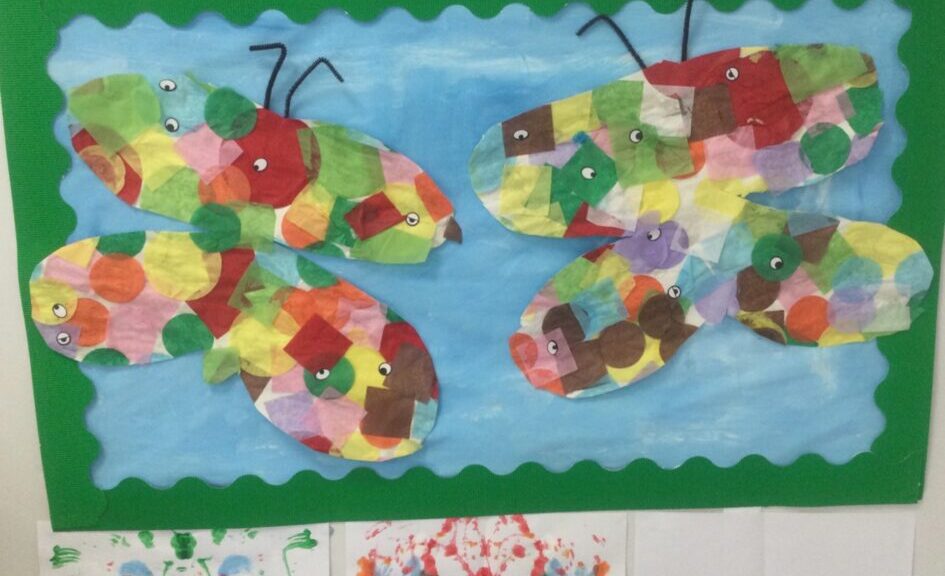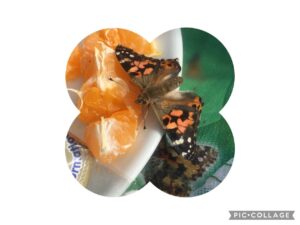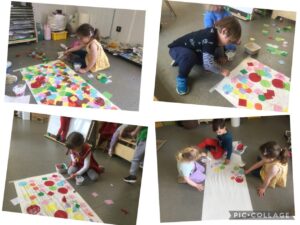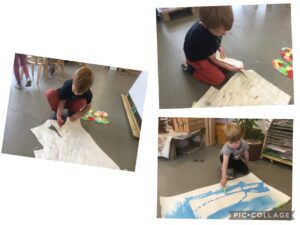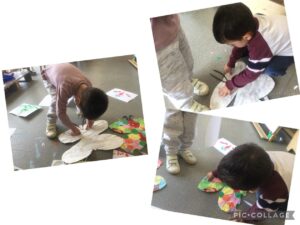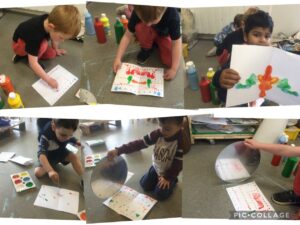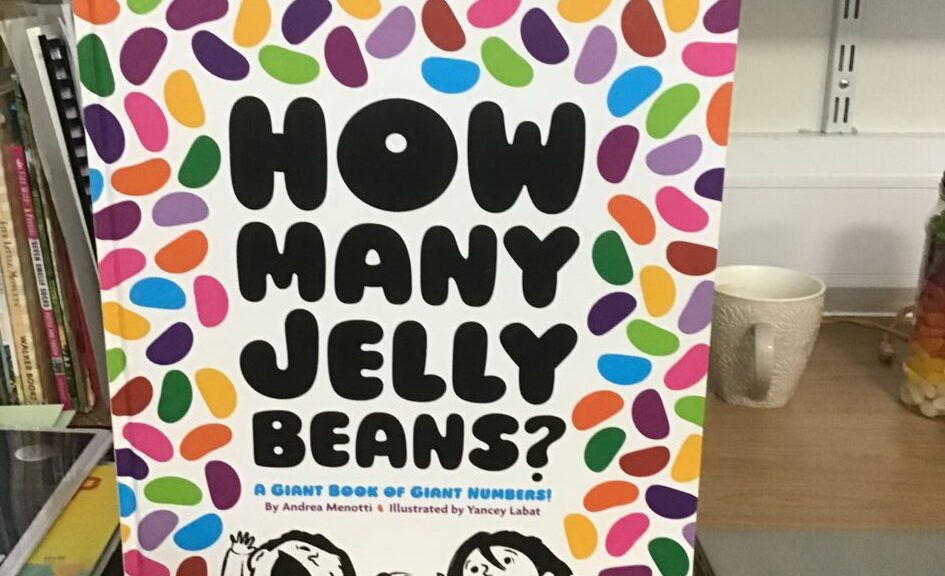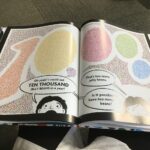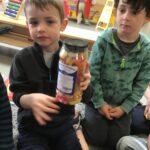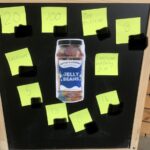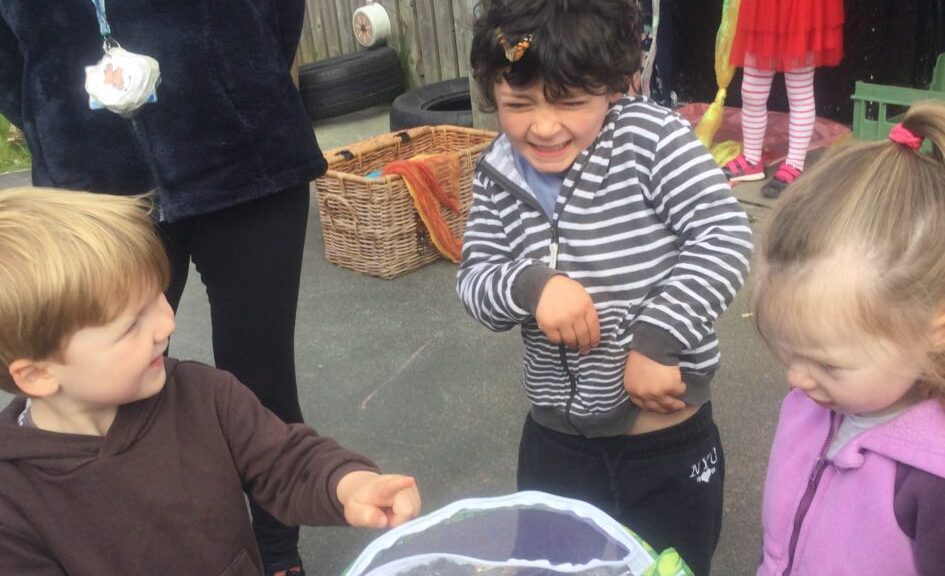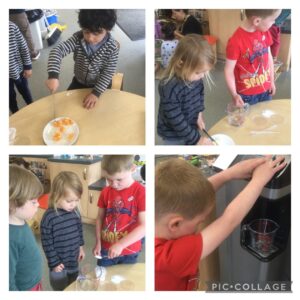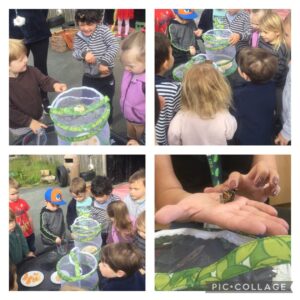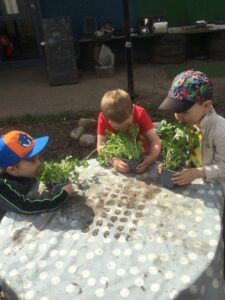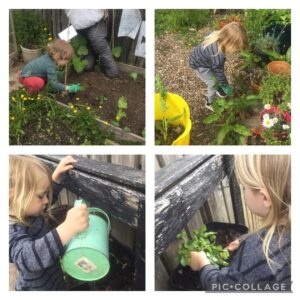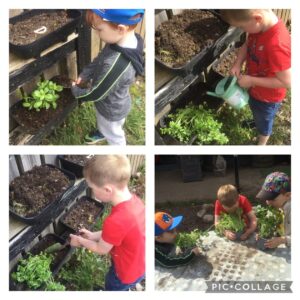The children have been enjoying telling their own stories using the puppets which sparked us to learn more about how a story is structured. We have learned that a story needs a start, where we choose a setting and meet the characters, a middle, where we develop the story and an ending.
We have used familiar stories, such as The Three Little Pigs and The Three Billy Goats Gruff to help us understand how to sequence a story.
We have also been creating our own books using an online tool called book creator. Here is Erin’s version of The Billy Goats Gruff.
Some of the children even felt confident enough to create their own stories. Grace used the story prompt cards to choose a main character and a setting then created a wonderful story!
Some of the younger children have enjoyed using the pictures in the books as prompts and demonstrated great confidence when sharing a story within a group. We even have some budding illustrators among our two year olds.
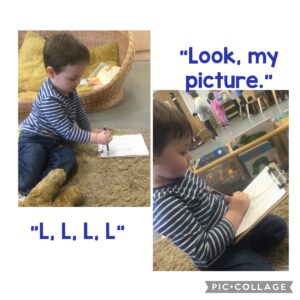
UNCRC article 31 – Every child has the right to relax, play and take part in a wide range of cultural and artistic activities.


